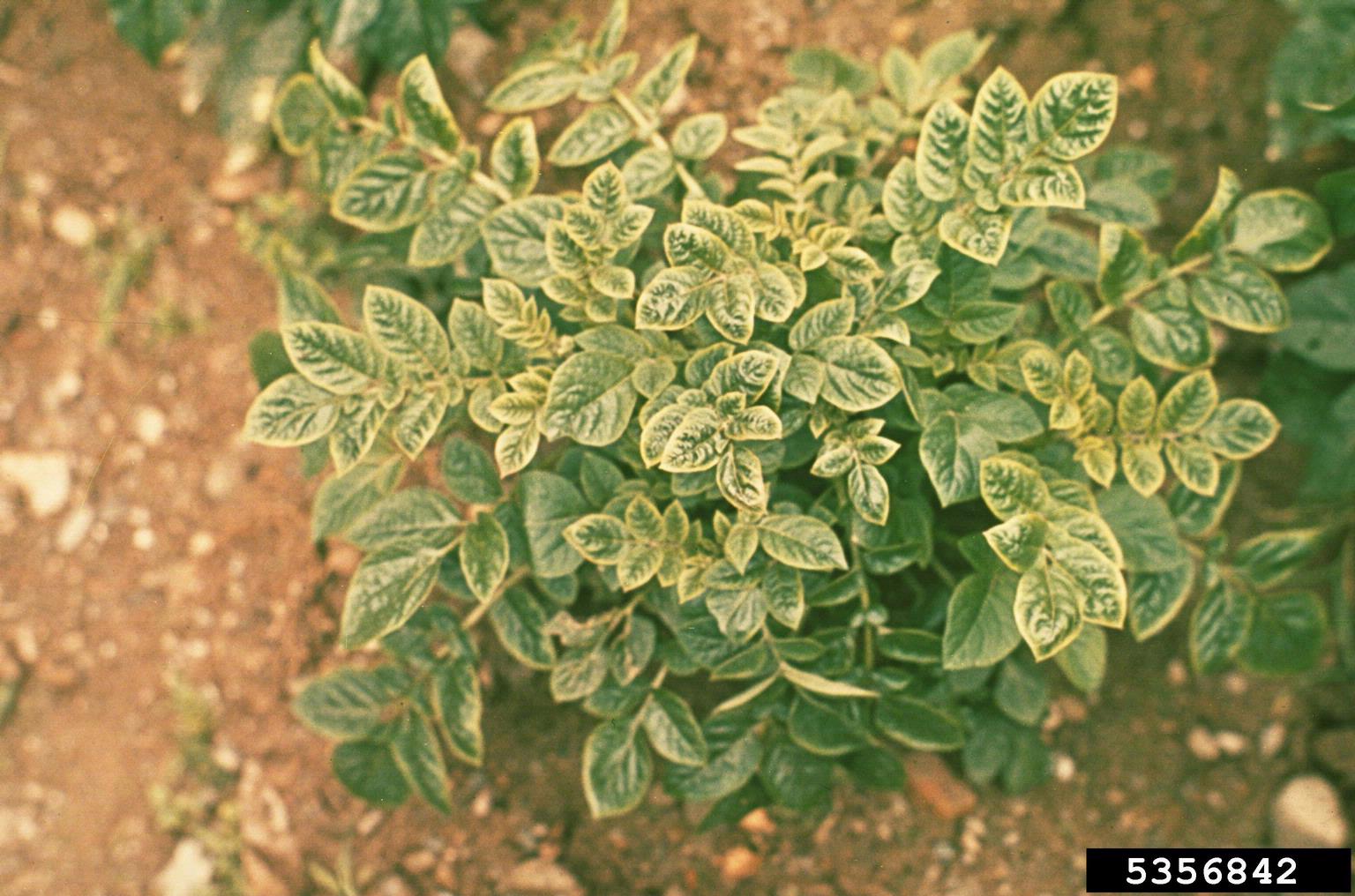Potato Plant Diseases – Is There A Treatment For Potato Leafroll Virus

Potatoes are prone to a number of potato plant diseases not to mention susceptible to insect attack and Mother Nature’s whims. Amongst these potato plant diseases is the potato leafroll virus. What is potato leafroll and what are the symptoms of potato leafroll virus?
What is Potato Leafroll?
The pesky aphids strike again. Yep, aphids are responsible for plants with potato leafroll virus. The aphids transmit a Luteovirus into the vascular tissue of the potato plants. The worst culprit is the green peach aphid. The virus is introduced either by the aphids or previously infected seed tubers. The virus, unlike some other potato plant diseases, takes some time for the aphids to acquire (several minutes to hours) and process through its body before it is a vector of the disease. Time is relevant, I know, but in this case, since the disease takes longer to spread, insecticides can be beneficial. Once an aphid has the disease, it has it for its entire lifetime. Both winged and non-winged aphids are responsible for spreading the disease. As the aphids feed on the plant, the virus is introduced into the phloem tissue (vascular) and multiplies and spreads.
Symptoms of Potato Leafroll Virus
Plants with potato leafroll virus will, as the name indicates, have leaves that roll, showing chlorosis or reddening, a leather-like feel, and dead spots along the leaf veins. The plant will become overall stunted in height and the tubers will also show necrosis. Some types of potato are more susceptible than others, including Russet Burbank, the most commonly cultivated variety in the western United States. The amount of tuber necrosis and severity will depend upon when plants with leafroll virus were infected. The necrosis may also increase during the storage of the tubers.
Is There a Treatment for Potato Leafroll Virus?
To thwart potato leafroll virus, use only certified, disease-free, seed tubers. Control volunteer potatoes and pluck out any plants that appear to be infected. The most popular potato varieties do not have any resistance to potato leafroll virus, but there are other cultivars that do not develop the necrosis on the actual tubers. Treatment for potato leafroll virus involves using chemical controls to eradicate aphids and reduce the spread of the disease. Apply insecticide from early to midseason.
Gardening tips, videos, info and more delivered right to your inbox!
Sign up for the Gardening Know How newsletter today and receive a free copy of our e-book "How to Grow Delicious Tomatoes".

Amy Grant has been gardening for 30 years and writing for 15. A professional chef and caterer, Amy's area of expertise is culinary gardening.
-
 Looking For Plants To Give You The Soft And Fuzzies? Try These 5 Fuzzy Leaf Plant Options
Looking For Plants To Give You The Soft And Fuzzies? Try These 5 Fuzzy Leaf Plant OptionsLovers of texture, drama, silver foliage and tactile plants will adore these special sensory garden additions. These fuzzy leaf plant options will leave you all aglow
By Susan Albert
-
 Get Ready For A Summer Of Hummers! Grow These Full Sun Hummingbird Plants and Flowers
Get Ready For A Summer Of Hummers! Grow These Full Sun Hummingbird Plants and FlowersIf you’re lucky enough to enjoy a sunny backyard, make sure you are maxing out on your pollinator opportunities and grow these full sun hummingbird plants and flowers
By Tonya Barnett